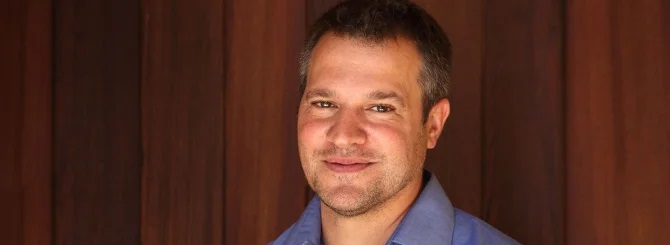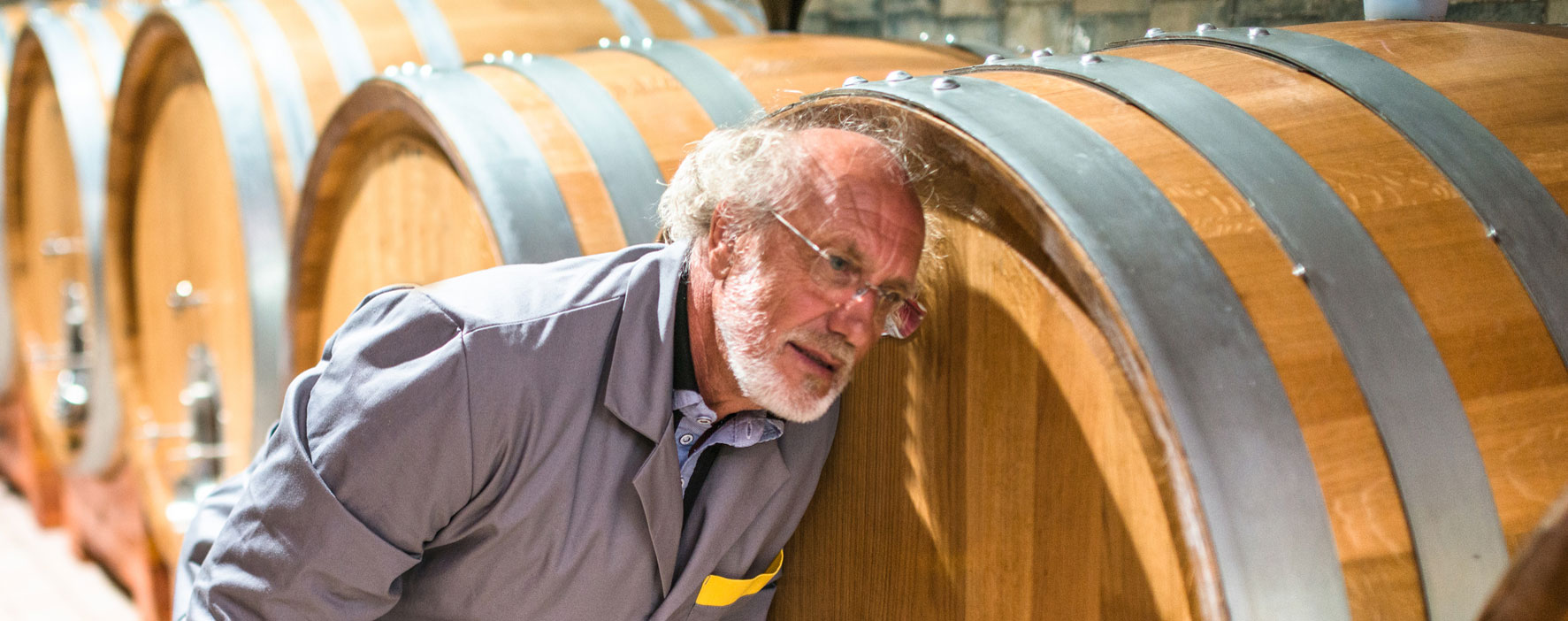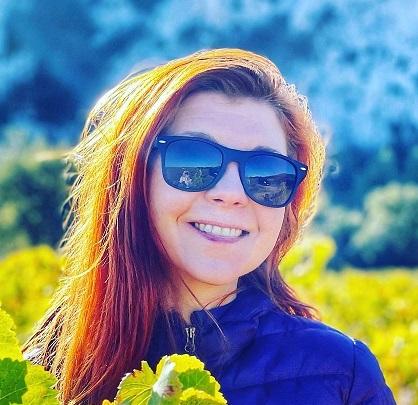As harvest times shift ever earlier (up to 25 days in the past decade, according to data gathered in France and Germany), it is slowly, but surely, changing vintners’ approach to winemaking in the cellar.
Warmer temperatures lead to higher sugar and lower acid. Secondary compounds like anthocyanins (which give grapes their colour and protect them from sunburn) and tannins (which give wine structure and astringency) are also thrown off-balance. Frosts during or after budbreak can severely injure vines, degrade overall fruit quality, and decrease yields. A slight reduction in the diurnal shift (the swing in temperature from day to night), changing wind patterns, unexpected and excessive rain – all symptoms of climate change – can make a once-great vineyard produce ho-hum fruit.
In most cases, climate change isn’t decimating an entire vintage – it’s just making it less compelling... Unless winemakers approach the changing conditions as a tango.
Cellar work, in the era of climate change, can no longer be a paint-by-numbers operation. It has to have action and reaction, abrupt pauses and pivots – a pushing of boundaries and overturning of conventions.
Thanks to the ever-improving art and science of winemaking, vintners are eagerly drawing climate change into the winemaking dance in a variety of ways, and often emerging with bottles that – despite the challenges – rival those from far more auspicious vintages. In the process, some of their most honoured and traditional winemaking tools are being reconsidered. Take bâtonnage, the technique of stirring up dead yeast cells, grape stems and skin tidbits that have settled at the bottom of the fermentation vessel.
The technique, which dates back to ancient Roman times, can add additional layers of flavour, aroma, texture and structure while also reducing the risk of hydrogen sulphide forming.
More flavour and structure, fewer scents of decaying ovum. Win-win? Not always. As temperatures rise in many winemaking regions, and wine taste trends toward leaner, fresher flavours, some winemakers are sidelining their longtime partner bâtonnage in their tango with climate change, while others embrace it ever more enthusiastically.
Backing off from bâtonnage
“Climate change is a reality,” says Lourenço Charters, winemaker and viticulture manager at Quinta Dos Murças in Portugal’s Douro and Quinta Do Ameal in Vinho Verde. “In Vinho Verde, we are just 30km (18.5 miles) from the Atlantic Ocean, which delivers cooler days and nights, and in the Douro, we are on the Lima River, which moderates temperature.”But even with cooling influences, temperatures overall are going up, making bâtonnage less of an asset.
“It’s a tool we use less and less,” Charters says. “It is great for giving wines a little more body and fatness, but on warmer years, we find it will make wine flat, with less energy.”
Charters says they are experimenting with different techniques, such as fermenting and ageing wine in concrete, to add complexity in lieu of lees-stirring.
Others, like Douglas Stewart, founder and owner at Lichen Estate in the Anderson Valley, California, have found that bâtonnage now zaps the zest out of their wines.
“We did rack-style bâtonnage for two years,” Stewart says. “But we found it was stripping our wine. Right now, we ferment our Pinot Noir in open-top puncheons, and give it up to 20% new oak. The tannin expression is already very strong, and by simply leaving it alone and letting it do its thing, the fruit can express the terroir beautifully.”
Andrew Latta, owner and winemaker at Washington’s Latta Wines, has also almost completely nixed bâtonnage from his programme, post-primary.
“Don’t get me wrong, I love lees,” Latta maintains. “And we bring a large percentage of our lees into barrel for both reds and whites. But we find that bâtonnage after primary fermentation just takes away from the fresh, immediate fruit flavours we’re going after. Ripeness is not an issue for us here, and the last thing we want is more opulence. Instead, we just let the lees hang around and do their thing without stirring them.”
Adjusting approach to bâtonnage

Experimentation is on the menu at Stag’s Leap Wine Cellars in Napa.
“We did a trial a few years ago that studied various frequencies and lengths of time of bâtonnage,” winemaker Marcus Notaro (above) says. “The more you stir and the more time you give it, the more body and creaminess is built into the wine. This often happens at the expense of the aromas.”
After the trial, Notaro and his team stopped using the standard recipe for lees-stirring that had been in place and began tailoring their approach to individual lots and vintages.
“If we want more fruit, we stir less,” he says. “If it needs more structure, we stir more.”
In general, Stag’s now stirs its Sauvignon Blanc and Chardonnay grown in Carneros every three to four weeks, whereas the more opulent Chardonnays emerging from Oak Knoll and Atlas Peak get stirred every two weeks.
In Australia, Adelaide Hills’ Shaw + Smith winemaker and joint CEO Adam Wadewitz has also abandoned the knee-jerk approach to bâtonnage.
“In the early days we thought bâtonnage was ‘how you made great Chardonnay’,” he explains. “We were prescriptive, three times a week or even more throughout ferment and maturation.”
But in recent years, their thinking has changed as they search for cleaner flavours.
“We keep solids in suspension during fermentation to build complexity, but only stir later if the wines are closed or overtly fruity,” he says. Wadewitz adds that the vineyard team at Shaw + Smith is tackling the root of the climate change – literally.
“We address climate issues in a more micro way,” he says, adding that they are adjusting clones, composting and mulching practices to protect the fruit, even during difficult vintages.
Stirring response
Other vintners are still deeply invested in bâtonnage but are tweaking their approach.“Climate change doesn’t always mean overall warming,” says Pia Carrau, co-owner at Rivera, Uruguay’s Cerro Chapeu. “Some regions are seeing lower temperatures, and more or less rain. For us, we are still using bâtonnage in barrels, and in tanks with mixers. To increase complexity, we are using alternative yeast strains, and sometimes reducing the length of contact with lees.”
At Lange Winery in the Dundee Hills in Oregon, winemaker Jesse Lange says their approach to bâtonnage is vintage-dependent.
“Every decision we make is based on our goal of capturing the terroir of the site and the region,” Lange explains. “We want to show the varietal character, the regional typicity, overlayed by the nuances of the vintage.”
To do that, Lange says they typically make 60 different lots of Pinot Gris, and a few hundred for Chardonnay – destined for six SKUs overall.
“We keep every block separate, and break it down further by different vessel materials and sizes and yeast strains,” Lange says. “Only when we understand what the wine is trying to say do we blend. And that means we make bâtonnage decisions on a case-by-case basis, from vessel to vessel.”
Typically, the team only consider stirring the lees in Chardonnay lots, “but we don’t have hard and fast rules. We want mineral-driven, fresh and vibrant wines that are food friendly. We are all about the acid profile. And typically, bâtonnage obliterates that. But not always!”
Bâtonnage or bust
For some though, bâtonnage is – and will likely always be – one of the foundational aspects of their approach to winemaking, especially when they’re weary of too much acid.At Bells Up Estate Vineyard in Oregon, Dave Specter relies on bâtonnage, he says, to build “texture and mouthfeel. I use it on white wines when I want to showcase balanced acidity, as opposed to crispness.”
Specter deploys the technique with Pinot and Seyval Blanc, using a paddle every few days to stir the lees in tank.
“I don’t oak my whites, and my batches are small enough to make manual stirring effective,” he says. “The result is a smoother finish, which is better for sipping and most food pairings. I have no plans to change – my customers love them and I’d be foolish to change that.”

Maggie Kruse, head winemaker at Sonoma’s Jordan Vineyard & Winery (above), says they have been practising “bâtonnage on every vintage of Chardonnay since the inaugural 1979 vintage”. Kruse says it’s an invaluable tool for adding texture and mouthfeel.
“We always taste after each stirring to determine if it needs an additional mix,” she says. “We adjust our approach to match the vintage. It all depends on what we are tasting.”
This article first appeared on our partner Wine-Searcher’s website (here).













.png)






